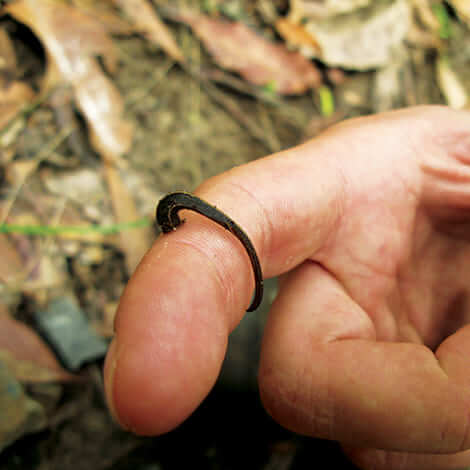There's nothing like climbing out of your pond and finding one (or more!) leeches stuck to your leg. And while they aren't necessarily bad for your pond or lake, they can be a nuisance if you use your pond for swimming or water sports. So, what are pond leeches, where do they come from, and how do you remove them from your pond?
What Does a Leech Look Like?
Leeches are brownish-black segmented worms that are a distant cousin to the earthworm. Roughly two inches long on average, they are typically flatter than they are thick and use their suction cup-like mouths and teeth to latch onto vertebrate and invertebrate animals, feeding on their blood.
Where Do Leeches Live?
Of the 700 different leech species, the majority live in freshwater environments like ponds and lakes. They settle in the murky mud and debris at the bottom of the water to find food and hide from predators.
What Do Leeches Eat?
Leeches attach to and feed on blood from a variety of vertebrate and invertebrate animals, ranging from worms, snails, and insect larvae to larger targets like fish, waterfowl, and humans.
Where Do Leeches Come From?
While it can be difficult to pinpoint exactly how leeches end up in your pond or lake, they're commonly carried in by waterfowl, amphibians, or small mammals. They can also be inadvertently introduced when you add new rocks, fish, or even plants to your pond.
How to Get Rid of Leeches in a Pond
Due to the nuisance, most pond owners want to know how to remove leeches from their pond. Because leeches live in the muck and detritus in shallow areas of your pond or lake, it's crucial to keep up with weed maintenance so you're not creating a hospitable habitat for them. We recommend the following methods:
- Pull Out the Debris: First, use a Pond Rake to remove weeds, accumulated debris, algae, decomposing plants and muck.
- Add Beneficial Bacteria: Next, add some beneficial bacteria, like those found in MuckAway. The bacteria will help digest whatever muck remains at the bottom of the pond. Remember that it will take some time to break down all that debris, so be patient.
- Let Your Fish Do the Work: If you've been wondering what eats leeches, here's your answer. With nowhere to hide, leeches become tasty meals for your fish. Most any fish large enough to eat leeches will eat them, but you may consider adding more aggressive fish like bass or redear sunfish to your pond.
- Set Leech Traps: For leeches that elude your fish, you can trap and remove them with bait. Punch leech-sized holes in a coffee or aluminum can, bait it with raw chicken or fish heads, and position it in a shallow area of your pond. Once the leeches take the bait and go inside, the burrs from the hole punches will prevent them from escaping. Remove the can once it's full and repeat until the leeches are gone.
As a bonus option, if temperatures fall below freezing where you live, try manipulating the water level in your pond during the winter. Once ice has formed on your pond, decrease the water level by at least four feet. This will freeze leeches living in the shallow muck It's an effective method, but proceed with caution since it can also kill other aquatic life burrowed in the mud.
How to Remove a Leech
If a leech latches onto you, don't worry. In most cases, it won't do any harm. In fact, you might not even feel it since leeches inject an anesthetic-anticoagulant combination while attaching themselves with suckers. You can remove a leech by breaking its suction seal with your fingernail or another blunt object, causing the worm to detach its jaws.
Closing Thoughts
Now you know the basics on pond leeches, where they come from, and how to get rid of leeches in your pond. To learn more about weed and debris maintenance, check out our resource on Pond Muck Control. For any other questions about pond leeches or our recommendations above, our customer service team is available to help.
